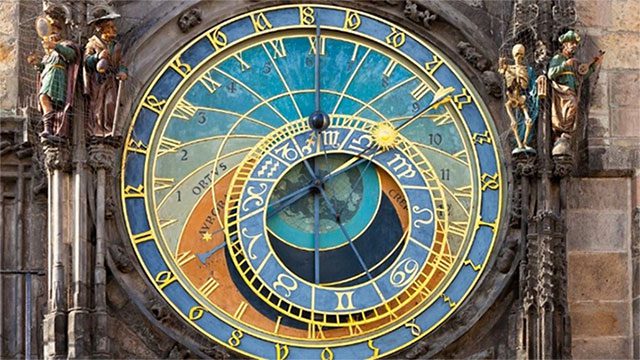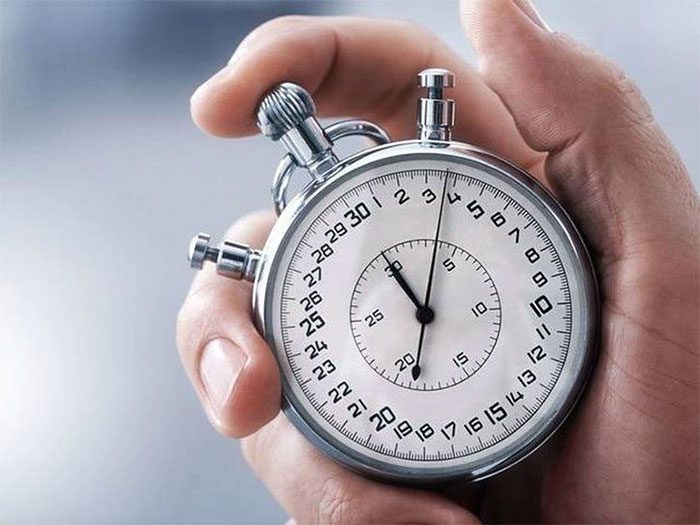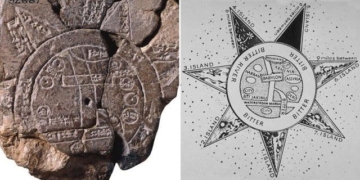Discovering more details about the small changes in the flow of time could help scientists uncover evidence of new physics.
How Long is a Second?
The definition of a second – the most fundamental unit of time in our current time measurement system has not been updated in over 70 years. Currently, the standard for a second is based on an experiment from 1957 involving an isotope, or a variant of cesium (the chemical element in the periodic table with the symbol Cs and atomic number 55) in its most “excited” state, releasing the largest possible number of photons or light units.
When re-measuring the wavelength – referred to as the natural resonant frequency of cesium, scientists discovered that cesium atoms “tick” 9,192,631,770 times per second. Since then, the length of a second has been defined.

Prague Astronomical Clock (Praha Orloj) – one of the oldest clocks in the world, located in the Czech Republic (Photo: Twitter).
However, in the next decade, this definition may change. Based on a technology called ultra-precise optical atomic clocks, scientists can now rely on visible light to establish a new definition of a second.
Theoretically, these atomic clocks would be significantly more accurate than the standard cesium clocks, which are known for measuring seconds based on the oscillations of cesium atoms when exposed to microwaves.
To better understand this difference, Jeffrey Sherman, a researcher at the National Institute of Standards and Technology’s Time and Frequency Division in Boulder, Colorado, USA, made an interesting comparison. “Imagine that in the past, we measured seconds with a 1-meter long stick,” Sherman said. “But now, you have a ruler with markings down to the millimeter.”
To achieve this, researchers must separate and then cool the atoms to absolute zero in a hair’s breadth, then “pulse” them with a color adjusted from visible light necessary to optimally excite these atoms. Finally, they will count the oscillations from the light pulses emitted over a very small distance to measure the “length” of a second. These are extremely complex techniques and may require additional experiments for accurate measurement.
However, if everything goes according to plan, Sherman believes that a new definition of a second could be officially adopted by 2030.
Why Redefine the Second?

Time is not simply a straight line
Time does not simply flow in a straight line. Einstein’s theory of relativity suggests that it is distorted by mass and gravitational forces. As a result, time can pass slightly slower at sea level, where Earth’s gravitational field is stronger, compared to a position at a high altitude, such as on the summit of Mount Everest.
According to Sherman, discovering more details about the small changes in the flow of time not only helps redefine concepts to make them clearer and more accurate but could also assist scientists in uncovering entirely new evidence of physics.
Moreover, the new optical clocks could also help detect dark matter, the invisible substance that creates gravitational forces, or search for remnants of the “Big Bang” in the form of gravitational waves – or ripples in spacetime, predicted by Einstein’s theory of relativity.
It is known that until now, the influence of dark matter has only been detected in remote areas, where galaxies orbit each other, from the bending of light around planets and stars, or from the residual light from the Big Bang.
However, if these dark matter clumps are hiding somewhere closer, even right here on Earth, then ultra-precise clocks – capable of detecting very slight slowdowns in time – are the most likely tools that could help scientists find them.




















































